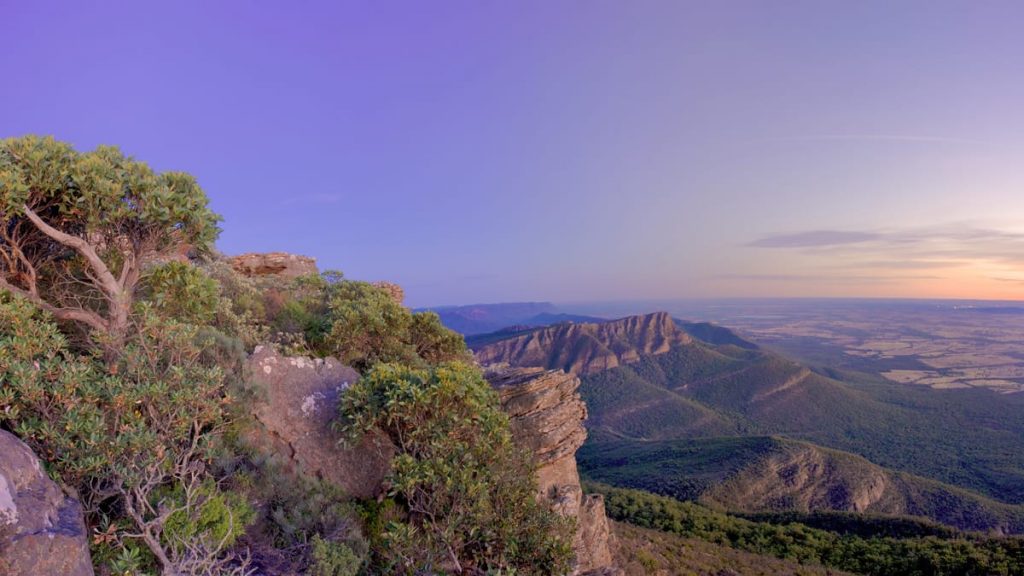
Gariwerd // Learn About The Indigenous History of The Grampians

Long before we started calling the region ‘the Grampians’, or before Grampians National Park was formed in 1984, the Traditional Owners knew the Grampians mountain range and region as ‘Gariwerd’. While you’ll hear us using the terms ‘Grampians’ a lot (it’s in our company name!), we’re actively invested in learning more about the history of Gariwerd/Grampians and using Traditional Place Names when we can.
What’s ‘Gariwerd’?
Gariwerd can be translated as ‘Mountain range created by Bunjil’, which refers to Gariwerd’s creation story, the Dreaming story. We’ll go into the story of how Gariwerd was created in a moment.
Gariwerd/Grampians National Park is the fourth largest national park in Victoria, located about 3 hours drive from Melbourne. It’s a special place, not only because of its cultural significance for First Nations peoples, but also because of its diverse and varied ecosystems.
Gariwerd/Grampians is famous for its unique geological formations as well as its vast array of wildflowers, with about one third of Victoria’s native flora found throughout the region. It also harbours 167 species of rare or threatened flora and fauna, so it’s vital that the region continues to be protected and maintained.
Hiking, camping, roadtripping, mountain biking, rock climbing and bird watching—these are just a snapshot of the recreational activities that people come from far and wide to enjoy inside Gariwerd/Grampians. The park’s high visitation rates are another reason why active preservation is so important.
But it’s not just the unique ecology or the possibility of epic adventure activities that make the preservation of the region so important.
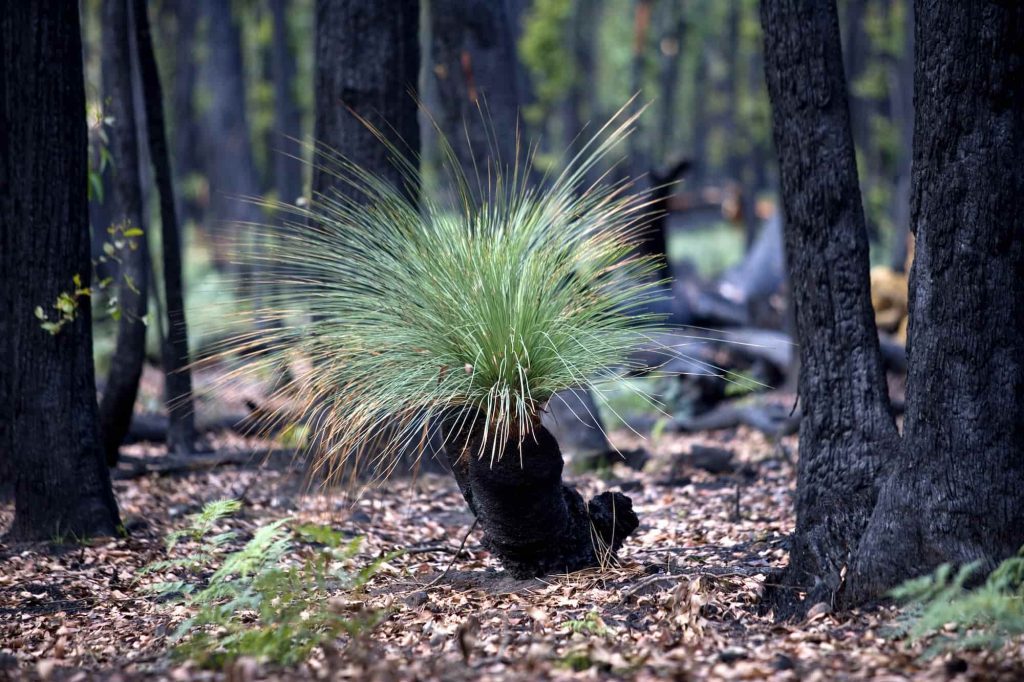
What’s the significance of Gariwerd for the Traditional Owners?
More than anything, Gariwerd is a cultural and historical portal into the lives led by the Jadawadjali, Djab Wurrung and Gunditjmara people tens of thousands of years ago, as well as the other groups of First Nations peoples that they interacted with.
Home to more than 80% of Victoria’s rock art sites, Gariwerd is a place of immense cultural significance, going some way to explain how Aboriginal people have respectfully utilised the land for generations.
Descendants of the Jadawadjali, Djab Wurrung & Gunditjmara people have a continued connection with and obligation to Gariwerd, including to its flora and fauna through their Dreaming stories—their Creation stories.
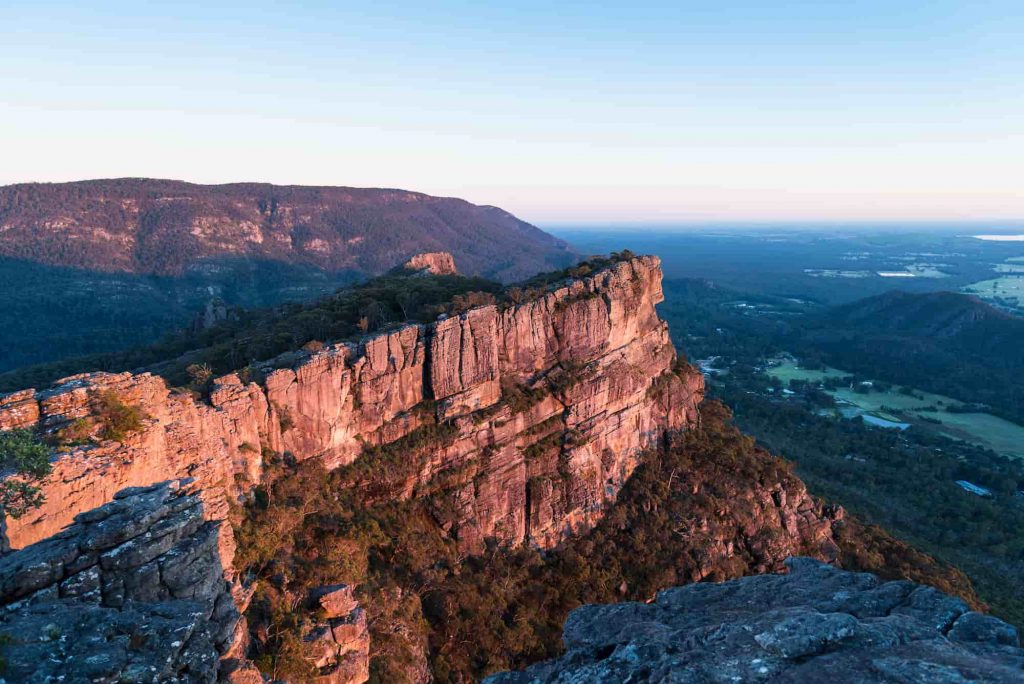
Gariwerd Creation Story – The Dreamtime Story
Gariwerd’s Dreaming Story is about how the Great Ancestor Spirit, Bunjil, created the land’s features, plants and animals, and about how further features came to be even after he had risen into the sky and become a star.
Learning about the Creation stories of the places we live, work and play in is one of the ways to connect into the history of the region, and acknowledge the connection to Country that First Nations people have had for millennia, and continue to have.
Rather than rewrite a story that isn’t ours to rewrite, we thought we’d quote the Gariwerd Creation Story as delivered by The Budja Budja Aboriginal Cooperative Ltd.
We really encourage readers to visit their website to learn more about both their important work, and Gariwerd, its story and its history.
Enjoy this Gariwerd Dreaming story.
In the time before time, the Great Ancestor Spirit, Bunjil, began to create the world we see around us; the mountains, the lakes, the forests and the rivers, the plains and the seas. He created all the plants and all the animals.
When he had created the beautiful sandstone ranges of Gariwerd, he often took the form of Werpil the Eagle so that he could view his work. He looked over the cliffs and the mountains. He listened to the sound of water, dripping after rain and thundering over waterfalls. He watched the plants and animals grow – From moss and tiny blades of grass to tall sturdy gums; from birds that flew to animals that burrowed through the soil. Bunjil had a special place near Gariwerd. From there he could look out over the ranges. He is pictured above in Bunjils Shelter with his two helpers, two Wirringan, or dingoes. Bunjil appointed two brothers, the Bram-bram-bult brothers, sons of Druk the Frog, to finish the task he had set himself. Their job was to bring order to the new world; to name the animals and creatures, to make the languages and give the laws.
At the end of his time on earth, Bunjil rose into the sky and became a star. He remains up there to this day, the protector of the natural world, his people and their beliefs. Meanwhile the Bram-bram-bult brothers had a big job, sorting things out here on earth. There was a huge, ferocious emu called Tchingal who lived on the flesh of people and animals. His home was in the malee scrub. He was hatching an enormous egg.
One day while Tchingal was away from the nest, Waa the Crow flew past. Feeling hungry, Waa decided to have a peck at the egg. He was pecking away quite happily when Tchingal returned. The monster emu was furious. Waa fled across the country towards Gariwerd, with Tchingal right behind him.
As he approached the ranges, Waa saw a crack in the mountains ahead. He flew into it, thinking he would be safe from Tchingal there. But Tchingal rushed at the mountain and struck it a mighty blow with his foot.
The mountain split open under the force of the impact, releasing a mountain stream and creating a gap, Barigar, also known as Rose’s Gap. The emu could now see Waa flying off towards the west. He chased him through Barigar, right to the other side of the range. Waa spotted another crack in the rockface. Desperately he tried to hide in it, but again Tchingal delivered a mighty kick to the rock and split it right open. This is how Jananginj Njaui (Victoria Gap) was formed where Bugara (Glenelg River) passes out onto the western plains. With the sun low on the horizon, Tchingal decided to make his camp at the foot of the new gap. This is why the place is called Jananginj Njaui, which means ‘the sun will go’.
The next morning Waa rose early and escaped to the nearby Moora Moora swamp. As this was his totem site, and, therefore, sacred territory, Tchingal was forbidden to follow him there.
Tchingal was angry and he was also very hungry. Just at this moment he spied a man, Bunya, out hunting in the distance. He decided to make a meal of him. When Bunya, who was not very brave, realised the emu was after him, he took off as fast as he could. Instead of using his spears to protect himself, as a warrior should, he threw them to the ground and scrambled up a large tree. Tchingal, not being able to climb, decided to wait. He knew that Bunya would have to come down some time.
Meanwhile, Waa the Crow had flown north to where the Bram-bram-bult brothers were staying. He told them of his narrow escape and of Tchingal’s ferociousness. Already angry at the emu for his bad deeds, the two brothers decided to punish him.
They came down to the mountains and saw what they thought was a bright star shining – it was Tchingal’s eye. Approaching the bird from different directions, the brothers crept up and threw their spears. One struck the emu in the chest, one in the rump, and one in the neck. Tchingal raged and stormed at the brothers, but he was fatally wounded. He ran off towards the northern plains, losing blood all the time. Soon he died, and the trail of blood he left behind him turned into the Wimmera River.
The Bram-bram-bult now approached the tree where Bunya had hidden. They told him to come down, but Bunya was too scared and called back that he would stay there until they made sure Tchingal was dead.
The elder brother was angry at such cowardice. He waved his spear and caused Bunya to become a possum, telling him to always stay in the treetops and to hunt for his food only at night.
Reaching the spot where Tchingal had died, the brothers plucked all the feathers from his body. Splitting each feather down the centre, they threw one half to the left, the other to the right, making two piles of emu feathers, each the size of a present day emu. The splitting of the feathers can still be seen in all emus. Their feathers are double, with two separate halves.
After feasting on Tchingal’s flesh, all the people travelled to collect his egg. It was so big and heavy that no one could lift it until Babimbal the Wattlebird came along. He was very strong and managed to carry the egg to Horsham, where it was cooked and made into a great feast. Babimbal had the honour of dishing it out, and in so doing he splashed himself with some of the yolk, creating the wattles on the side of his head.
Before leaving, the Bram-bram-bult ordered the two emus to divide their large egg into several smaller ones in future, so they wouldn’t be as jealous of their one egg as Tchingal had been. In this way they hoped to keep the peace.
Now, if you look at the Southern Cross, you can see the story told in the stars. At the head of the Cross is Bunya, the timid possum. Three of the stars are the spears hurled by the Bram-bram-bult. The large western star is the spear-that struck Tchingal in the chest, the smaller star next to it is the spear that passed through his neck, and the star at the bottom of the Cross is the spear that struck him in the rump.
Tchingal himself is the dark shape that lies next to the Southern Cross. The eastern star of the Cross is Druk, the mother of the Bram-bram-bult, and the two brothers are the Pointers of the Southern Cross Waa the Crow is at a safe distance on the other side of the sky, as the star we know as Canopus.
Source: Gariwerd/Grampians—The Budja Budja Aboriginal Cooperative Ltd.

All photo credit: Visit Victoria




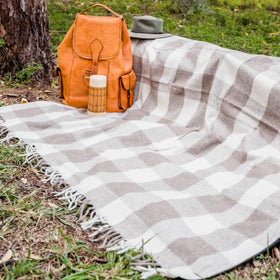
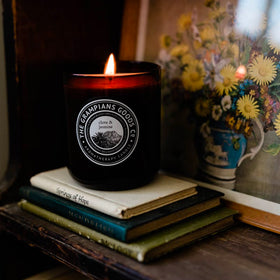


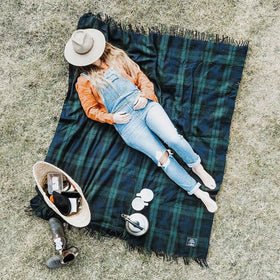
Leave a comment